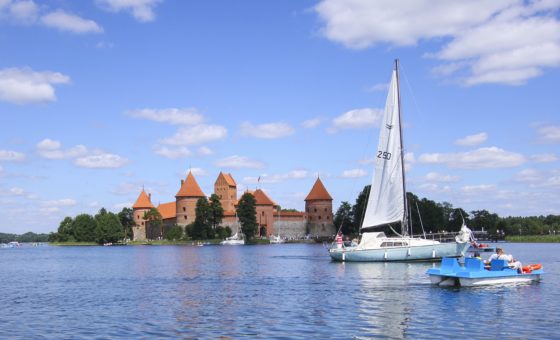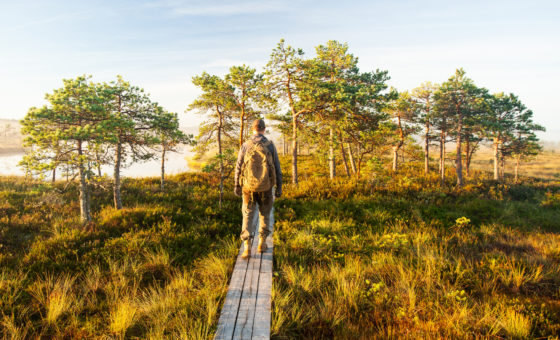Curonian Spit National Park
Visit the UNESCO World Heritage Site Curonian Split that is being shared by Russia and Lithuania. This is one of Europe’s largest stretches of sand dunes that is being surrounded by the Curonian Lagoon on the east and the Baltic Sea on the west, making an astonishing and heavenly landscape to visit. The people living there formed the current landscape of the Curonian Split struggled with the inescapable wind and tried to tame the sand carried by it. Until the 19th century most of the residents made their living by fishing and is still valuable from an ethno-cultural, historical and aesthetic point of view. Most of the earliest fishing settlements are now buried in the sand dunes but you can still find some of the survived ones with traditional wooden dwellings, painted in dark brown and blue, and decorated with wooden carving on the gable along the coast of the Curonian Lagoon.
Explore the gorgeous pine forests, sand dunes and bays by cycling on the Curonian Split stretching out on a 50 km sand beach connecting the settlements of Juodkrantė, Preila, Pervalka and Nida. Hire a bike and go around this phenomenal national park and explore the old fishermen houses, the ancient Curonian cemeterary, the Sea Museum and Dolphinarium in Smiltyne, the Hill of Witches and a colony of grey herons and cormorants in Juodkrante, the Dead Dunes near Pervalka, the Great Dune of Parnidis, the Thomas Mann House and Museum and, the Lutheran church in Nida.
You will feel amazed once you get on the peak of the dunes. You’ll enjoy a breathtaking view of white sand hills and waves of the Baltic, the verdure of pine-trees and calm Curonian Lagoon. Let the nature perform a symphony of wind, sand and water as you breathe in and absorb this wonderful place.










